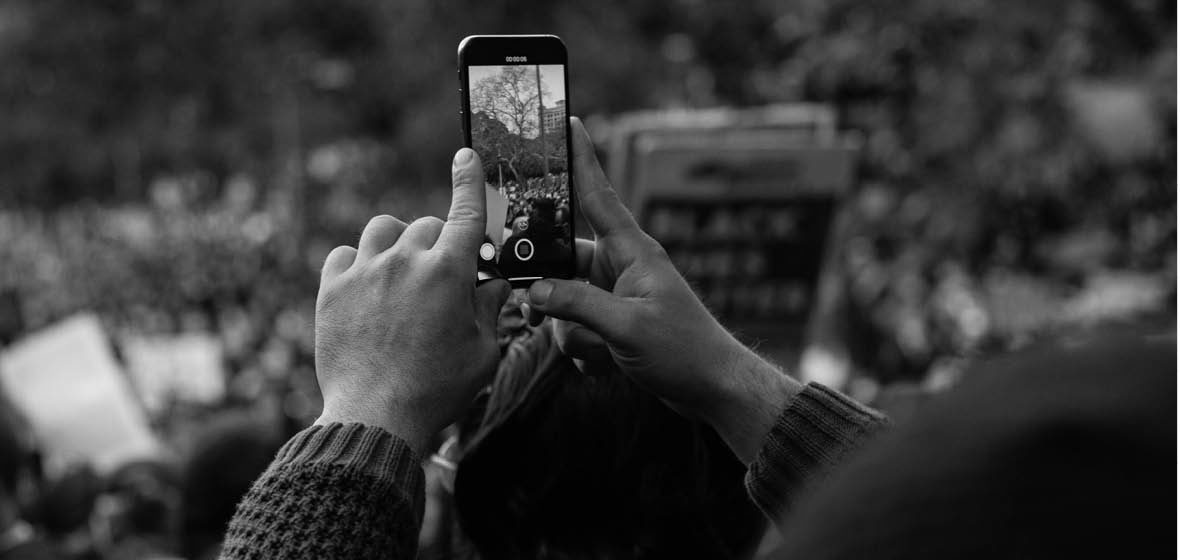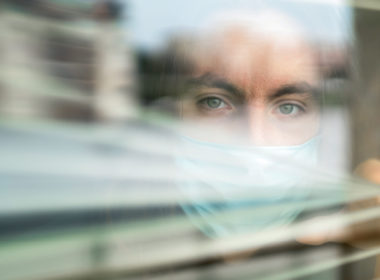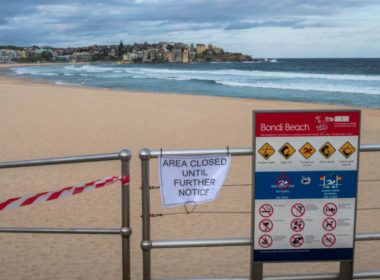When freedom of movement puts our right to health at risk, and democratic rights clash with human rights – what comes first?
As NSW navigates its third wave of COVID-19, a few elements of this unprecedented pandemic are becoming easier to predict.
One is that lockdowns are inevitable when case numbers of a highly contagious new variant surge through a population with minor vaccine coverage. The second – frustrating for some, heroic and bold for others – are the protests that follow.
“Protests are, it seems, inevitable in any free country that locks down,” wrote columnist Parnell Palme McGuiness in The Sydney Morning Herald on 30 July, six days after thousands swarmed Sydney’s CBD to protest the extension of a city-wide lockdown.
What is less certain is the law that applies to protests in NSW. And whether citizens in our “free country” have a right to publicly march against government action in such unprecedented times.
What is the law in NSW?
Following the protests in Sydney on 24 July, news footage emerged of unmasked demonstrators shouting on the steps of Town Hall waving signs like “EMERGENCY SOS FREE AUSTRALIA”. The vision evoked scenes from COVID-ravaged nations like the US and UK during 2020, where citizens demanded their governments re-open shops, restaurants, bars, sport, and recreational activities after months of closures.
However, Australia, unlike other countries, has no Bill of Rights or Human Rights Act that expressly protects its citizens’ right to protest. Where the First Amendment to the US Bill of Rights states “Congress shall make no law…prohibiting the right of people peaceably to assemble”, there is no equivalent in the Australian Constitution.
Jurisdictions within Australia also take different legal approaches: Queensland provides an express legislative right to peaceful assembly, and Victoria and the ACT provide for a right to peaceful assembly under their human rights charters. NSW has no equivalent.
Nicholas Stewart, a leading criminal lawyer and partner at Dowson Turco Lawyers, explains NSW citizens have a right under common law to “peaceful assembly” and that “the right to protest peacefully is arguably a defining feature of representative (and direct) democracies”. But Stewart explains the right to protest is a “qualified” right, fraught with exceptions and grey areas, saying that “in NSW, the common law right to assembly is regulated by statue”.
He says while the Summary Offences Act 1988 is the primary Act in question, “it does not confer a right to protest, but facilitates the exercise of the right to assemble, by encouraging mutual co-operation between intending protesters and police, and providing ‘authorised’ protesters with protection from being found guilty of certain offences relating to the obstruction of people, vehicles or ships in a public place.”
“The legal basis of the right to protest in NSW is the common law right to peaceful assembly. The right is bolstered by the Australian Constitution, under the implied freedom of political communication,” Stewart says.
“The right is also strengthened by Australia being a party to seven core international human rights treaties. For example, the right to freedom of assembly and association is contained in articles 21 and 22 of the International Covenant on Civil and Political Rights [ICCPR] and article 8(1)(a) of the International Covenant on Economic, Social and Cultural Rights [ICESCR].”
In the wake of Sydney’s anti-lockdown protests, the NSW Council for Civil Liberties (NSWCCL) has stated that “the legal right to peaceful protest is fundamental to our democracy”, and “the right to gather publicly and protest remains vital even during lockdown and must not be suspended without justification via public health restrictions”.
“Protests are how the invisible or ignored can become seen and heard by government,” reads a statement published on the NSWCCL website in August. “Only after tireless, sustained protest did Aboriginal and Torres Strait Islander people win the right to vote, did LGBT+ people achieve marriage equality, and did unions secure the eight-hour work day.”
At the heart of the issue is a technical legal question over whether leaving home to protest is a reasonable excuse amid public health orders. We don’t really know the answer to that yet.
– SAMANTHA LEE, SOLICITOR, REDFERN LEGAL CENTRE
Does a common law precedent apply in unprecedented times?
A Black Lives Matter protest was upheld as lawful by the NSW Supreme Court of Appeal in a high-profile case in July last year. The court took this decision even while large gatherings were restricted in NSW by COVID-19 public health orders.
However, a key difference may be that the pandemic looked very different then to now: case numbers were in single or low double digits and strict stay-at-home orders had been lifted in NSW. The protestors also wore masks and spaced out as they marched peacefully, in contrast to the violent scenes of Sydney’s recent anti-lockdown protests. This year, police and government authorities have made it clear they believe the right to protest does not exist while stay-at-home orders are in force.
NSW Police Minister David Elliott has vowed to hunt down every one of the “very selfish boofheads” who attended the July protest in breach of public health orders. He even established a 22-man strike force to issue penalty infringement notices to every person identified for breaching Greater Sydney’s stay-at-home order, which is law under the Public Health Act. At the time of writing in late August, “Strike Force Seasoned” has issued 220 penalty infringement notices and 73 criminal charges in relation to the protests.
Solicitor Samantha Lee, head of Redfern Legal Centre’s Police Accountability practice, highlights the problem that most of these penalty infringement notices – fines – will not be tested in court. Most people simply pay the fine rather than spend time and resources trying to appeal it through Revenue NSW or, later, the court system.
“On the few occasions when we [Redfern Legal Centre] have been about to take a [COVID-19] fine to court, the police have withdrawn it – so we have not actually had a chance to test the laws in front of a magistrate,” Lee says.
She adds that the public health orders create “so much grey area” and are changing so often that it is almost impossible for lawyers to advise clients on their chances of success in appealing a fine.
“At the heart of the issue is a technical legal question over whether leaving home to protest is a reasonable excuse amid public health orders,” she says. “We don’t really know the answer to that yet.”
Competing rights: health or freedom
Stewart believes that a right to health and safety is arguably as important as the right to protest amid COVID-19. When a few thousand protestors put the health of millions of NSW citizens at risk by spreading COVID-19, legal tensions arise.
“There is no hierarchy of human rights. Human rights are indivisible, interdependent and interrelated, because all rights – political, civil, social, cultural and economic – are equal in importance,” Stewart says. “Those seeking to conduct protests during a pandemic must recognise that their right to peaceful assembly may be in conflict with other human rights, and there may be arguments that limitation of protesting is necessary and justified when there is a risk of affecting other people’s right to life and right to health.”
Yusur Al-Azzawi, a Senior Lawyer at Human Rights Law Centre, says “democracy doesn’t stop in a pandemic”. However, she cautions that the threat to public health that COVID-19 must be balanced against the competing right to protest.
“COVID-19 does pose a serious threat to public health, so some temporary and proportionate restrictions on gatherings and people’s movement have been – and may remain – necessary … [but] the pandemic must not be used as a gateway to impose lasting restrictions on protest rights,” she tells LSJ.
“Protesters also have a responsibility to ensure that when they attend protests during a pandemic, they do so safely. This includes carefully following health advice (wearing masks, practicing social distancing and using hand sanitiser) and not attending protests if showing symptoms, testing positive to COVID-19 or while awaiting test results.”
Alongside lockdowns, protests and 11am press conferences, another predictable feature of the pandemic is emerging: the ongoing legal debate over freedoms and the extent to which governments should be able to curtail one over another.




